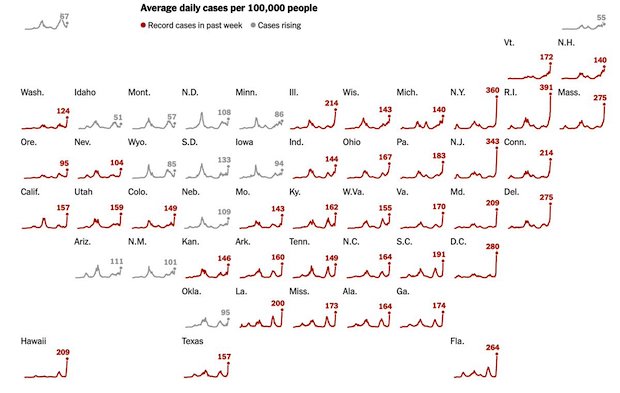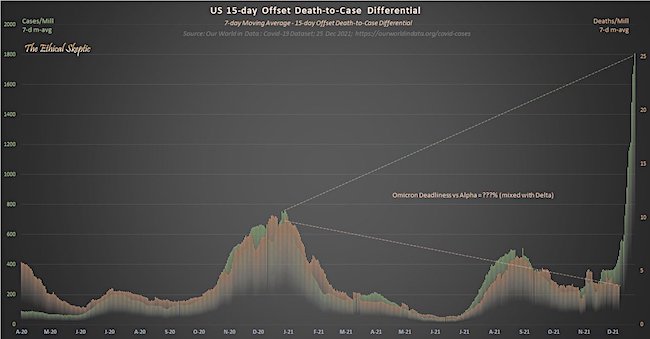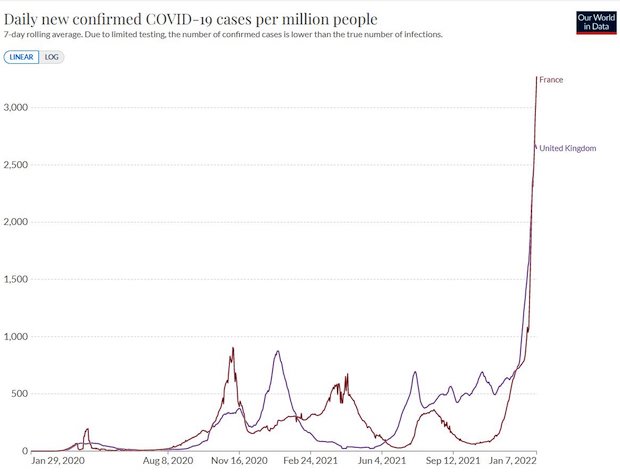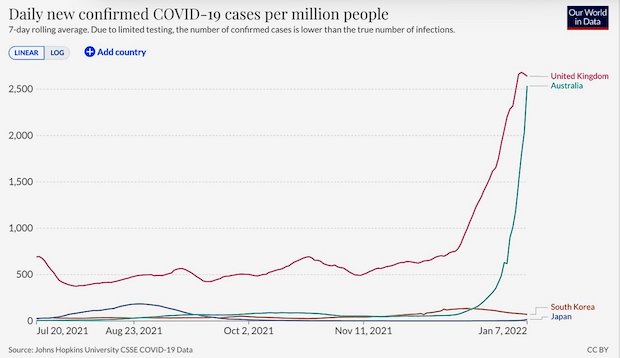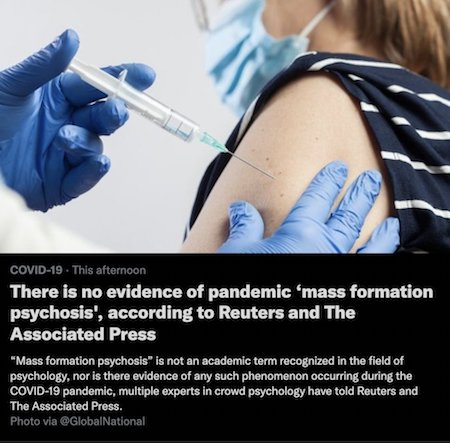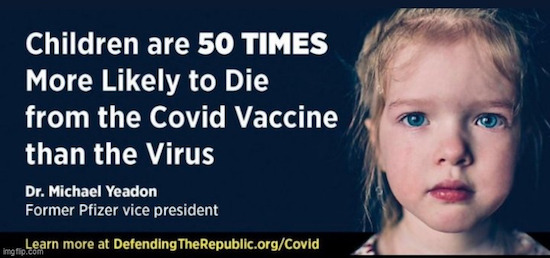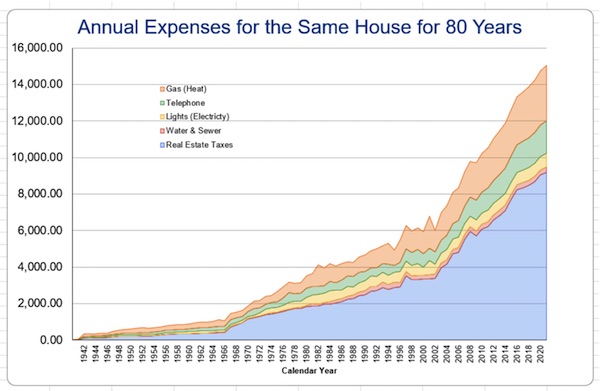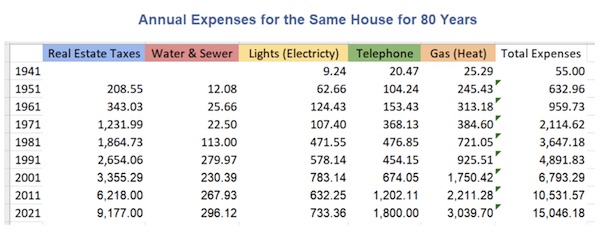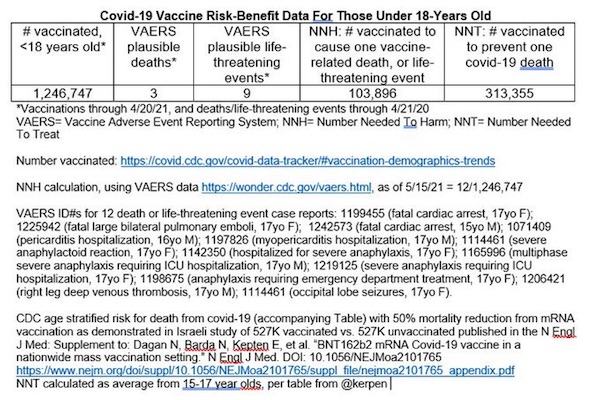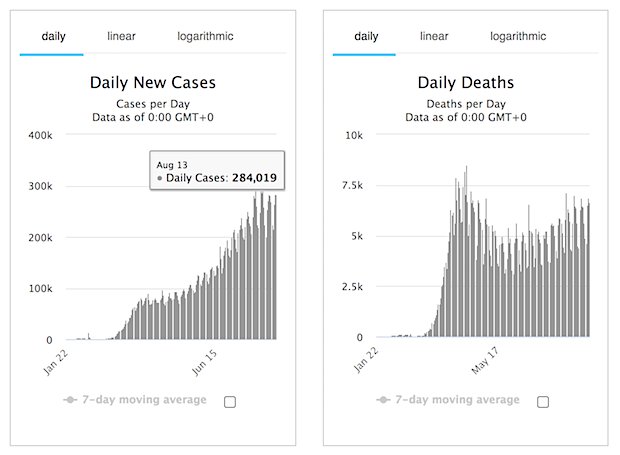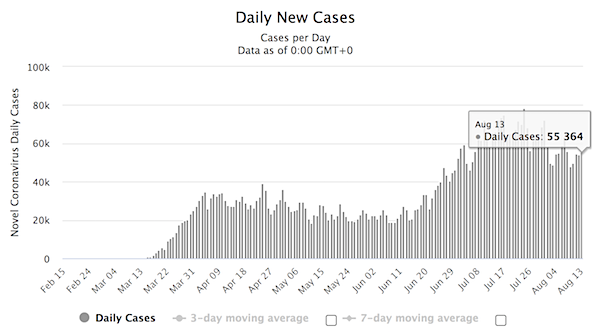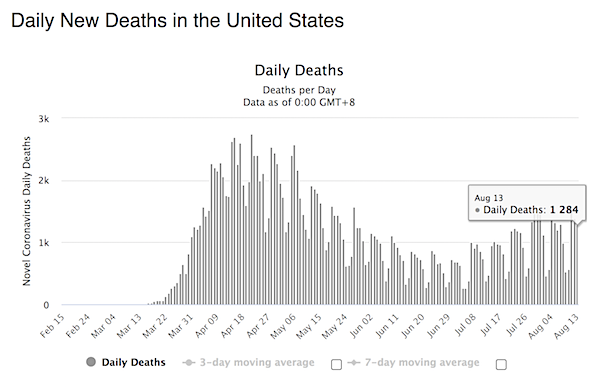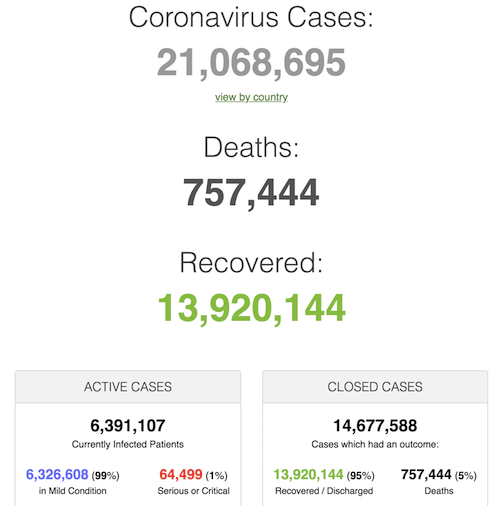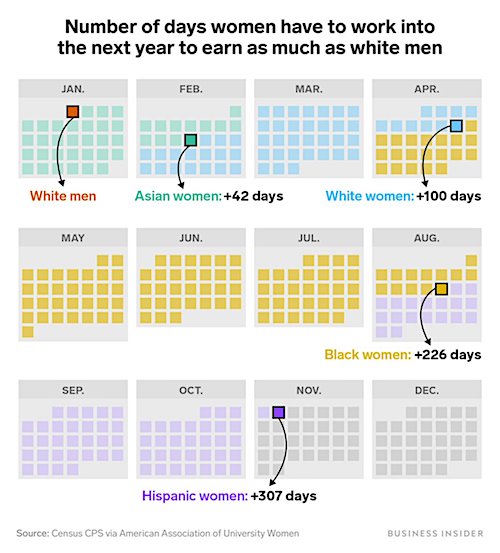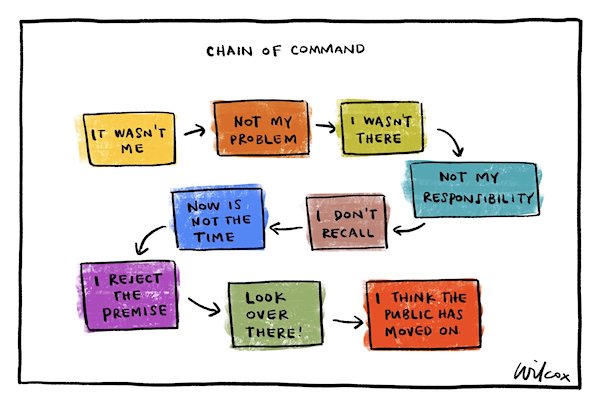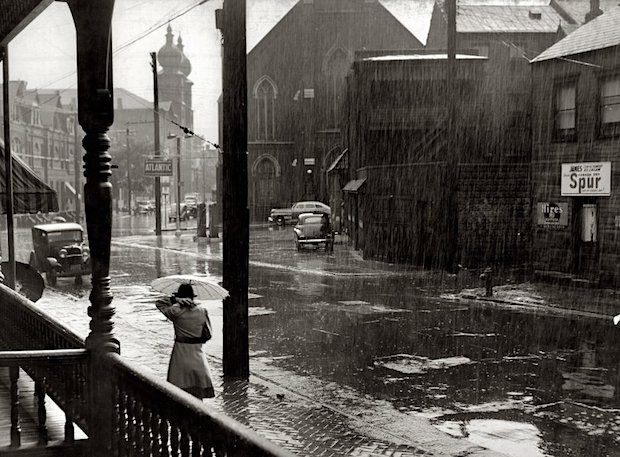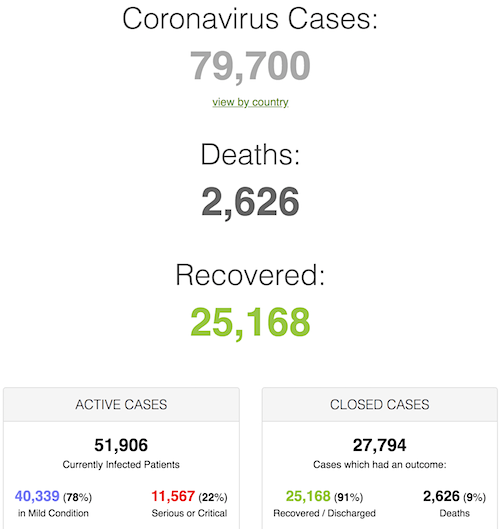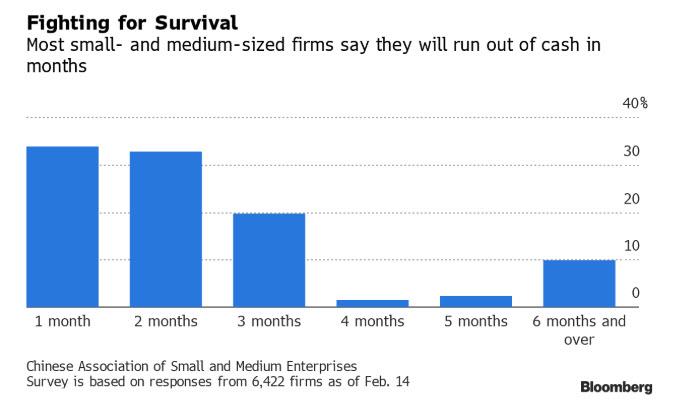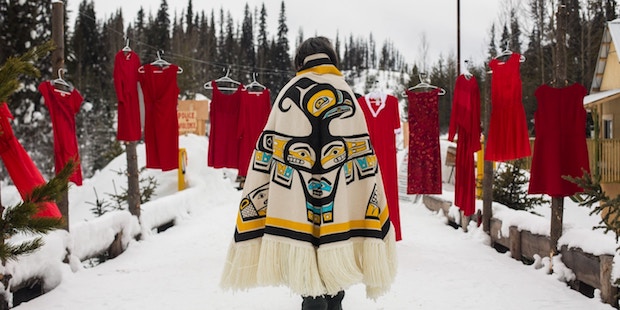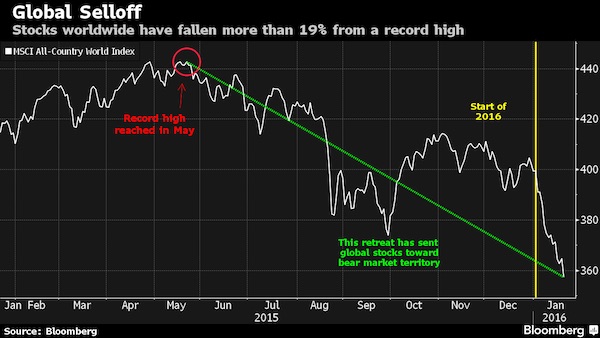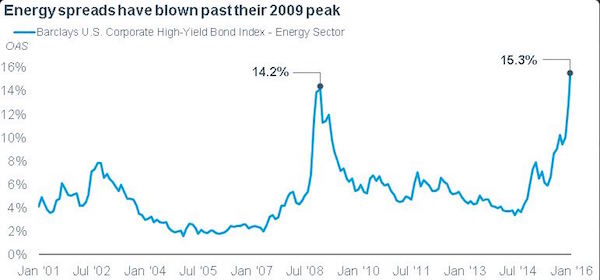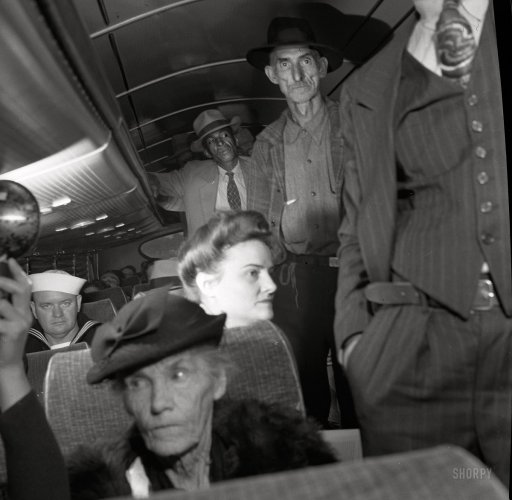
Caravaggio St. John the Baptist in the wilderness 1604

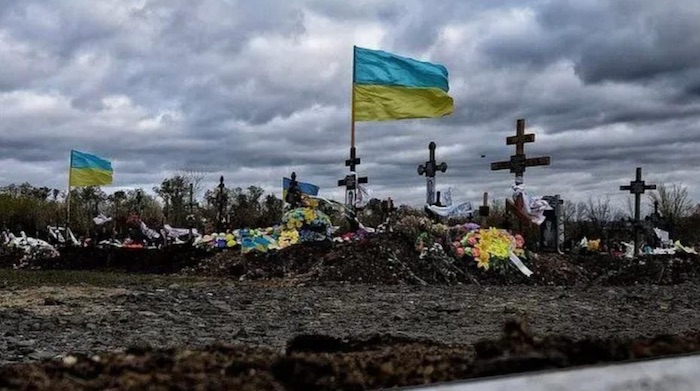

Trump Pledges Peace And To End The War Between Russia and Ukraine and Urges Both Leaders Contact Him To Meet Immediately.
Watch Our Live Stream Here:https://t.co/dGxbHHkT5O pic.twitter.com/YBgtSeviHd
— Alex Jones (@RealAlexJones) November 18, 2024
Hammer
WATCH: Senator Mullin on Trump's cabinet picks; "I think the president wants a hammer at the DOJ and he sees Matt Gaetz as a hammer——His picks have been maybe unconventional, but we hired an unconventional president. The American people wanted that." pic.twitter.com/Hgh1wiKXBS
— Overton (@overton_news) November 19, 2024
Trump tariffs
Trump Pledges To Lower The Trade Deficit With Passage Of The Trump Reciprocal Trade Act, Which Will Match Tariff Rates That Are Imposed By All Outside Countries.
Watch Our Livestream Here:https://t.co/dGxbHHkT5O pic.twitter.com/cxkNdiFDp0
— Alex Jones (@RealAlexJones) November 18, 2024
RFK
Robert F. Kennedy Jr.: "We live in a democracy. We don't have a priesthood here. We don't have high priests who are telling us, we're in charge of our own lives, and Americans need to do their own research. And, you know, listen, people say trust the experts. That became a mantra… pic.twitter.com/vobwgflIoT
— Camus (@newstart_2024) November 19, 2024
O’Leary
Kevin O’Leary on Elon Musk and Vivek Ramaswamy at @DOGE: “I don’t see any reason why these two can’t just release the hounds and go nuts…This is fantastic… we haven’t had anything quite like this and I absolutely love it.” pic.twitter.com/IQiZ75RfDM
— America (@america) November 18, 2024
Scott Ritter
The West is wrong and Russia is not bluffing, there will be a war, and that war will be nuclear, and we will all die.
The moment the ATACMS is used, Russia will respond, and the response will be catastrophic for Ukraine and devastating for NATO and the United States.
When I… pic.twitter.com/mgSGjWYV87
— Ignorance, the root and stem of all evil (@ivan_8848) November 19, 2024
Jennings
"I did not expect Hitler to get so many meeting requests! First from Joe Biden, now from Mika and Joe, it's amazing that literal Hitler is getting all of these meeting requests."
The left's hypocrisy is out of control! pic.twitter.com/fja2G4LzKp
— Brigitte Gabriel (@ACTBrigitte) November 19, 2024
Tucker
— Elon Musk (@elonmusk) November 18, 2024
Shirt
Great shirt. pic.twitter.com/CbLMOx6dI6
— Jeff pontz (@827js) November 18, 2024


Dems’ farewell present to America.
• Ukraine ATACMS Strike On Russia After Putin Lowers Threshold For Nukes (ZH)
About a day after President Biden authorized Ukraine to use the long-range US-made MGM-140 Army Tactical Missile System to strike deeper into Russian territory, a new report suggests that the Ukrainian Armed Forces have hit a military installation in the western Bryansk region. This comes after Kremlin spokesperson Dmitry Peskov said Russia’s nuclear weapons doctrine was changed and signed by President Vladimir Putin, indicating “the use of Western non-nuclear rockets by the Armed Forces of Ukraine against Russia can prompt a nuclear response.” “For the first time, Ukraine’s Defense Forces struck Russian territory with ATACMS ballistic missiles,” RBC Ukraine news agency reported Tuesday. RBC Ukraine said the military facility near the city of Karachev in the Bryansk region was successfully hit with ATACMS. This location was about 115 kilometers (71 miles) from the border with Ukraine.
“Indeed, for the first time, we used ATACMS to strike Russian territory. The strike was carried out against a facility in the Bryansk region, and it was successfully hit,” one source told the local media outlet. Separately, media outlet Kyiv Post stated the 67th arsenal of the Main Directorate of the Missile and Artillery Directorate of Russia was hit. The facility reportedly had large stockpiles of anti-aircraft missiles, munitions for multiple launch rocket systems, artillery ammunition, and guided bombs, much of which was supplied by North Korea. Kyiv Post noted: “Russian media sources, including residents on social networks, reported explosions coming from within the Karachev district, and suggesting that a “military base” was being attacked.” The Russian Astra Telegram channel shared videos of the incident, while local reports said that there had been strikes on this arsenal in late 2023 and again in June and October this year.
Bloomberg revealed more details about the attack: Russian Defense Ministry confirmed Ukrainian armed forces launched a strike with US-made ATACMS ballistic missiles at a military object in Bryansk region on the border with Ukraine, Interfax reports. • 5 missiles were shot down, 1 damaged; no casualties reported • Missile debris caused fire in a military installation. Earlier, Kremlin spokesperson Dmitry Peskov told reporters that President Vladimir Putin signed new changes to Russia’s nuclear weapons doctrine. Peskov said the new modifications signify “the use of Western non-nuclear rockets by the Armed Forces of Ukraine against Russia can prompt a nuclear response.”
Peskov’s comments were made shortly after President Biden approved Ukraine’s use of ATACMS against military targets deep inside Russia. Additionally, Russian Foreign Minister Sergey Lavrov addressed the nuclear doctrine, stating that the threshold for using nuclear weapons has been lowered, during an event in Rio de Janeiro, Brazil, on the sidelines of the G20 Summit. Lavrov asserted that Russia’s position is that nuclear war won’t happen, and that fundamentally Russian nuclear doctrine doesn’t differ from the United States’ – which sees nukes as a ‘deterrent’. But still, he added, Russia will “react accordingly” to Ukraine firing a US long-range missile.

The story of the presence of 10,000 or so North Korean troops in Russia/Ukraine is highly questionable. It does come in handy when used as the reason to let Ukraine fire long range missiles at Russian targets.
• On Way Out, Reckless Biden Allows Deep Russia Strikes (Lauria)
Biden ultimately sided with the Pentagon, and he couldn’t be more explicit why. He opposed a NATO no-fly zone over Ukraine fighting Russian aircraft, he said, because “that’s called World War III, okay? Let’s get it straight here, guys. We will not fight the third world war in Ukraine.” U.S. Defense Secretary Lloyd Austin at the time backed him up, saying: “President Biden’s been clear that U.S. troops won’t fight Russia in Ukraine, and if you establish a no-fly zone, certainly in order to enforce that no-fly zone, you’ll have to engage Russian aircraft. And again, that would put us at war with Russia.” But now Biden has reversed himself on his sensible positions and is defying the Pentagon to roll the dice that Russia’s warnings, repeated on Monday by Putin’s spokesman, won’t lead to nuclear conflict.
While he previously would not even authorize British long-range missile attacks into Russia in September, let alone U.S. ATACMS, on Sunday he authorized the ATACMS, risking Russia taking direct action against U.S. targets. So what changed Biden’s addled mind? [..] Biden staked his legacy on Ukraine. He was involved in the 2014 coup, in allegedly shady practices there with his son and then in provoking Russia to invade in 2022. He foolishly believed he would prevail in bringing down Putin with an economic, information and proxy ground war. All three are now decisively lost as the U.S. — still under Biden — prepares for the end game. Biden’s only face saver is for Ukraine to get back some of its lost territory by trading for it with Russian territory it seized in Kursk this summer.
So he is authorizing U.S. soldiers to operate ATACMS missiles from Ukraine to beat back a 50,000-man Russian force seeking to take back all of that Russian territory. Part of that force, according to the Pentagon spokesman, is a contingent of at least 10,000 North Korean troops invited by Moscow, thus operating legally on pre-war Russian territory. Yet the presence of these North Koreans has sent the Biden administration and its allied media into paroxysms of near insanity. The New York Times reported on Sunday: “Officials said Mr. Biden was persuaded to make the change in part by the sheer audacity of Russia’s decision to throw North Korean troops at Ukrainian lines. He was also swayed, they said, by concerns that the Russian assault force would be able to overwhelm Ukrainian troops in Kursk if they were not allowed to defend themselves with long-range weapons.”
It is not like Biden doesn’t know the potentially grave consequences he is recklessly unleashing. He was already warned about the no-fly zone and said “that’s called World War III, okay?” He was then warned by the Pentagon against allowing the British missiles and acted like a responsible statesman. But now, when it comes to his precious legacy, he doesn’t appear to give a damn about anything else. He was deprived of a second term (by traitors within his own party he no doubt thinks) and he will risk a NATO-Russia war to avoid the taint of utter defeat in Ukraine. This is what he’s ignoring, according to the Times:
“Some of Mr. Biden’s advisers had seized on a recent U.S. intelligence assessment that warned that Mr. Putin could respond to the use of long-range ATACMS on Russian soil by directing the Russian military or its spy agencies to retaliate, potentially with lethal force, against the United States and its European allies. The assessment warned of several possible Russian responses that included stepped-up acts of arson and sabotage targeting facilities in Europe, as well as potentially lethal attacks on U.S. and European military bases.” Where it goes from there, nobody knows. Thanks, Joe.

“President Joe Biden has violated the US Constitution and ought to be impeached..”
“Biden is committing an unconstitutional Act of War that endangers the lives of all US citizens..”
“This is an impeachable offense, but the reality is he’s an emasculated puppet of a deep state..”
• Biden Committing Unconstitutional Act Of War- Rep. Massie (RT)
President Joe Biden has violated the US Constitution and ought to be impeached for permitting Ukraine to fire American-supplied long-range missiles into Russia, Congressman Thomas Massie has said. Multiple US outlets reported over the weekend that Biden had lifted the restrictions on Kiev’s use of US-supplied rockets. While the White House has neither confirmed nor denied the news officially, a volley of missiles was fired at Russia’s Bryansk Region early on Tuesday. “By authorizing long range missiles to strike inside Russia, Biden is committing an unconstitutional Act of War that endangers the lives of all US citizens,” Massie, a Republican from Kentucky, posted on X (formerly Twitter) on Monday. “This is an impeachable offense, but the reality is he’s an emasculated puppet of a deep state,” he added.
According to anonymous officials who spoke to the media, the US permission would “mostly” apply to the Kursk Region of Russia, which Ukraine invaded in August. The decision was reportedly triggered by the Ukrainian claim that 10,000 North Korean soldiers have been deployed to Kursk to aid the Russian troops. The US and its allies had placed certain restrictions on the use of the weapons they have supplied to Kiev since 2022, in order to maintain plausible deniability regarding their involvement in the conflict with Russia.Russian President Vladimir Putin has said that the use of long-range missiles would change the nature of the conflict and make NATO a direct participant in the hostilities. Moscow has also revised its nuclear doctrine to encompass conventional attacks by proxies.
Massie has served in the US House of Representatives since 2012 and won his latest re-election bid unopposed. His insistence on constitutionalism has often put him at odds with both the Democrats and his own party. Under the US Constitution, only Congress has the power to start a war. The last time this happened, however, was in 1942, when it was declared against Axis-aligned Hungary, Bulgaria, and Romania. Since 1991, the national legislature has passed three Authorizations for Use of Military Force (AUMF), twice against Iraq and once against Al-Qaeda. The AUMF targeted at Al-Qaeda has been stretched to justify the 2001 invasion of Afghanistan as well as subsequent interventions in Syria, Somalia, Yemen and elsewhere.

“At least six long-range ATACMS missiles were fired into Russia’s Bryansk Region overnight..”
• Kiev Has Permission To Launch Long-Range Strikes – Zelensky (RT)
Ukraine’s Vladimir Zelensky has claimed that several Western countries have given Kiev permission to use their long-range missiles against internationally-recognized Russian territory. The New York Times reported on Sunday that US President Joe Biden had lifted some restrictions on the use of US-provided ATACMS missiles. The White House has neither confirmed nor denied the NYT article, which cited anonymous officials. “Now that there are relevant decisions, not just in the media, but also from the relevant countries, it is very important to add to these decisions the number of opportunities with which we can reduce the military potential of the Russian Federation, wherever it is,” Zelensky said on Tuesday at a press-conference in Kiev.
Speaking alongside Danish Prime Minister Mette Frederiksen, Zelensky added that Ukraine is now “working to ensure that all countries support long-range capabilities,” urging Germany in particular to “take the appropriate decision” as well. The UK and France have also reportedly lifted restrictions on the use of the long-range missiles they have provided to Kiev, although they haven’t confirmed the move either. Germany and Italy have publicly said their policy remained unchanged, however, and that their weapons can only be used on Ukrainian soil.
At least six long-range ATACMS missiles were fired into Russia’s Bryansk Region overnight, Moscow’s Defense Ministry reported on Tuesday. Five of them were shot down, while debris from one reportedly caused a localized fire at a military base, causing no property damage. Russian President Vladimir Putin has repeatedly warned that long-range strikes with Western weapons would change the nature of the Russia-Ukraine conflict, making it a direct confrontation between NATO and Moscow. On Tuesday, Russia officially updated its nuclear deterrence doctrine to authorize an atomic response to conventional attacks from countries backed by nuclear powers. This has been widely interpreted as applying to Ukrainian strikes with weapons supplied by the US, UK and France.

“Russia reserves the right to retaliate with weapons of mass destruction against Kiev and key NATO facilities, wherever they may be located,” Medvedev said. “This would amount to World War III..”
• Ukrainian Attacks Could Merit Nuclear Response Against NATO – Medvedev (RT)
Moscow’s revised nuclear doctrine permits retaliatory strikes against NATO for the kind of attacks that US President Joe Biden reportedly authorized last week, former Russian president Dmitry Medvedev has warned. Washington has reportedly granted Kiev permission to use ATACMS ballistic missiles deep inside Russian territory. Medvedev, who serves as deputy chairman of the Russian Security Council, warned on Tuesday that such actions would qualify as a threat warranting a nuclear response under the new doctrine, which President Vladimir Putin enacted earlier in the day. In response to such an attack, “Russia reserves the right to retaliate with weapons of mass destruction against Kiev and key NATO facilities, wherever they may be located,” Medvedev said. “This would amount to World War III,” he added.
Unrestricted strikes using Western weapons are part of Vladimir Zelensky’s ‘victory plan’, which he presented to the US president in September. The reported change in US policy, which was confirmed by several American allies, came after Donald Trump won the presidential election earlier this month. The Republican politician has claimed that he could end the Ukraine conflict in 24 hours, once he is back in office in January. Some of his close supporters have accused Biden of trying to railroad the incoming administration into prolonging hostilities with Russia with his decision.
While Washington has not issued an official statement on the matter, State Department Assistant Secretary for Western Hemisphere Affairs Brian A. Nichols told the Brazilian newspaper O Globo on Tuesday that strikes by Kiev as authorized by Biden may encourage Russia to negotiate peace. In September, Putin issued a warning to NATO member states, which Zelensky was lobbying to authorize long-range strikes on Russia. Kiev is incapable of launching Western weapons without direct help of donor states, so any such attack would put NATO and Russia directly at war with each other, the Russian leader said. The updated Russian nuclear posture introduces several changes, one of which states that an attack by a foreign nation that does not have weapons of mass destruction but is backed by a nuclear power should be considered as a joint attack by both.

“.. the previous version of the doctrine contained no mention of Russia being authorized to use nuclear weapons if attacked by a non-nuclear state backed by a nuclear power.”
• New Russia Nuclear Doctrine: What Has Changed (Sp.)
The new Russian nuclear doctrine recently signed by President Vladimir Putin features several notable articles that were absent from the doctrine’s previous iterations, Russian military analyst Ret.Col. Viktor Litovkin tells Sputnik. “Firstly, the 2020 edition of the doctrine contained no mention of Belarus where we deployed our nuclear weapons and whom we had taken under our ‘nuclear umbrella’,” Litovkin explains. “Secondly, the previous version of the doctrine contained no mention of Russia being authorized to use nuclear weapons if attacked by a non-nuclear state backed by a nuclear power.” According to him, Russia thus sends a direct warning to the United States and NATO who supply Ukraine with long-range missiles and urge Kiev to use them, effectively waging a war against Russia by proxy.
“This is a serious warning that, if they go too far and long-range missiles are used against Russian territory – and these long-range missiles are programmed by NATO specialists because Ukrainian specialists lack the necessary equipment and expertise, not to mention NATO aircraft and heavy UAVs guiding these missiles – we would be empowered to strike against the sites these missiles are launched from,” he adds. Dmitry Stefanovich from the Moscow-based Institute of World Economy and International Relations at the Russian Academy of Sciences also points out that the new edition of the nuclear doctrine states that nuclear weapons could be used in case of a threat to Russia’s “territorial integrity and sovereignty” rather than in case of a threat to “the country’s very existence” as before.
The doctrine thus serves as a reaction to “global processes in the military-political sphere, not all of which are related to Ukraine,” Stefanovich notes. “Most importantly, the document still maintains that nuclear deterrence works only until nuclear weapons are used. One can only guess what would happen ‘beyond the nuclear threshold’ and I hope these speculations remain purely hypothetical,” he remarks.

“..the weapons authorized by President Biden would enhance Ukraine’s defense capabilities and may encourage Russia to negotiate peace..”
• Kremlin Urges Foreign Nations To Study Russia’s New Nuclear Doctrine (RT)
Foreign leaders should carefully study Russia’s new nuclear doctrine, Kremlin spokesman Dmitry Peskov has said, after President Vladimir Putin formally authorized the document. Published on Tuesday, the eight-page policy statement on Russian nuclear deterrence includes changes previewed by Putin in September. It is “extremely important” and should be “the subject of very deep analysis both in our nation and, probably, abroad,” Peskov told journalists during a regular briefing. Among the changes under the new rules, Russia will now consider an attack by a non-nuclear power backed by a nuclear one as a joint attack, and will also treat a massive air assault as warranting a nuclear response. Peskov highlighted specific wording in the doctrine “aimed at ensuring realization by the potential enemy of the inevitability of retaliation in case of aggression against the Russian Federation and/or its allies.”
Last week, US President Joe Biden reportedly granted Kiev permission to use American-made long-range weapons to deliver strikes deep into Russia. The policy change has been confirmed by some US allies, but not by Washington itself. Putin previously said that any such attack would amount to a direct war between NATO and Russia. Ukrainian leader Vladimir Zelensky has included unrestricted attacks with Western weapons in his ‘victory plan’ for the conflict with Moscow, which he touted to Biden in September. Other points of his proposal include the deployment of a “conventional deterrence package” on Ukrainian soil. He reportedly requested the US to station Tomahawk cruise missiles in Ukraine and threatened to launch them against Russia.
Peskov was asked on Tuesday whether such a deployment would trigger a Russian nuclear strike under the new doctrine. He declined to answer directly, instead referring to the new provision about foreign attacks backed by nuclear states that Moscow wants to deter with the update. Moscow reserves the right to use nuclear weapons when its sovereignty and territorial integrity or those of its allies is at stake, the official added. On Tuesday, US State Department Assistant Secretary for Western Hemisphere Affairs Brian A. Nichols appeared to indirectly confirm the policy change when he claimed to the Brazilian newspaper O Globo that the weapons authorized by President Biden would enhance Ukraine’s defense capabilities and may encourage Russia to negotiate peace.
This is absolutely terrifying, all for a country that has nothing to do with us.
Russian state television showed the countries in Europe that will be hit by nuclear weapons if the war intensifies:
"All it takes is three missiles and British civilization will collapse." pic.twitter.com/aXLSmRggWJ
— Queen Natalie (@TheNorfolkLion) November 18, 2024

“..it would make more sense for Trump to deport the Democrats and take in the Hispanics.”
• The Western World Has Degenerated Into Idiocy (Paul Craig Roberts)
The moron, Annalena Baerbock, Germany’s foreign minister, has threatened China for supporting Russia. What is it with Western politicians that they think they have authority over the foreign policy of sovereign countries and threaten powerful countries that can blow them off the face of the earth? Why do they so cavalierly stir up powerful enemies that can crush them? Annalena Baerbock is clearly a stupid person. The American Biden regime is even more stupid. The Biden morons have turned a contemptuous eye to Russian military doctrine and the Russian government’s statement that any missiles fired into Russia will be regarded as fired by the US and NATO and will receive a response that includes the possible use of nuclear weapons. The idiot Biden regime has thumbed its nose at Russia and, thereby, regarding the warning as “Putin’s bluff,” has invited nuclear war.
It is possible that Putin will accept Russia’s humiliation in order to spare the world, but he must know that sooner or later he must fight or surrender Russia to Washington. What is being gained from taking such an irresponsible risk? It would be one thing if it were only a risk the consequence of which would be borne only by the Biden morons. But it is another when the risk is borne by the entire world. Where is the world’s denunciation of the Biden idiots for exposing the world to nuclear war? What purpose justifies this extraordinary risk? Is the entire world as stupid as Biden? The notion that America whose government is demonstratively insane is a world leader is beyond absurdity. Such a threat to life as Washington presents cannot be made great. It can only be eliminated. If you care to understand how utterly stupid tens of millions of Americans are, note that about 45% of Americans who voted in the election voted for Democrats.
When almost half of the American population is totally mindless and supports with its votes military attack on Russia, how can Trump make America great again? Indeed, how can America even survive? If you think about it, it would make more sense for Trump to deport the Democrats and take in the Hispanics. America would be better off. To be great a country needs smart people, and clearly Hispanics are smarter than Democrats. We must hope that Trump has risen to the occasion, asked Putin to hold off, and promised to reverse the policy once inaugurated. To remind you, I warned that we would reach this dangerous point because Putin refused to use sufficient force to end the conflict with Ukraine before Washington could get deeply involved. Trying to avoid a larger war, Putin produced one. Note that the US and NATO are already in violation of this new doctrine.
For example, an Aegis Ashore facility, which is almost identical to the anti-ballistic missile Aegis Combat System carried by US naval vessels, just opened in Poland. This is the second such facility on the Russian border (the first is in Romania). Both facilities are armed with the dual-use Mark 41 launch system that can launch both ballistic and Tomahawk cruise missiles, which can be armed with nuclear weapons. The missiles arrive and are loaded into the launchers concealed in large crates that make it impossible for observers to ascertain which type of missile is being used. It is difficult to understand such provocative actions by Washington that clearly threaten the world with nuclear war.

“..how could Putin reassure the Russian people of anything short of an absolute annexation of Ukraine after the cost of one million Russian casualties?”
1/ Russia doesn’t want to annex Ukraine. 2/ There are not nearly one million Russian casualties.
• Can Trump End Ukraine’s ‘Endless War?’ (Victor Davis Hanson)
Trump was elected in part on promises to avoid “endless wars” of the sort that cost American blood and treasure in Afghanistan and Iraq but without resulting in strategic advantage or civilized calm. Yet as a Jacksonian, Trump also restored American deterrence through punitive strikes against ISIS and terrorist thugs like Baghdadi and Soleimani—without being bogged down in costly follow-ups. During the last four administrations, Putin stayed within his borders only during the Trump four years. But upon entering office, Trump will likely still be faced with something far more challenging as he confronts what has become the greatest European killing field since World War II—the cauldron on the Ukrainian border that has likely already cost 1-1.5 million combined dead, wounded, and missing Ukrainian and Russian soldiers and civilians.
There is no end in sight after three years of escalating violence. But there are increasing worries that strategically logical and morally defensible—but geopolitically dangerous—Ukrainian strikes on the Russian interior will nonetheless escalate and lead to a wider war among the world’s nuclear powers. Many on the right wish for Trump to immediately cut off all aid to Ukraine for what they feel is an unwinnable war, even if that abrupt cessation would end any leverage with which to force Putin to negotiate. They claim the war was instigated by a globalist left, serving as a proxy conflict waged to ruin Russia at the cost of Ukrainian soldiers. They see it orchestrated by a now non-democratic Ukrainian government, lacking elections, a free press, or opposition parties, led by an ungracious and corrupt Zelensky cadre that has allied with the American left in an election year.
In contrast, many on the left see Putin’s invasion and the right’s weariness with the costs of the conflict as the long-awaited global proof of the Trump-Russian “collusion” unicorn. Thus, after the 2016 collusion hoax and 2020 laptop disinformation ruse, they see in some of the right’s opposition to the war at last proof of the Russophiliac Trump perfidy. They judge Putin, not China’s imperialist juggernaut, as the real enemy and discount the dangers of a new Russia-China-Iran-North Korean axis. And to see Ukraine utterly defeat Russia, recover all of the Donbass and Crimea, and destroy the Putin dictatorship, they are willing again to feed the war to the last Ukrainian while discounting escalating Russian threats to use tactical nuclear weapons to prevent defeat.
Trump has vowed to end the catastrophe on day one by doing what is now taboo: calling Vladimir Putin and making a deal that would do the now impossible: entice Russia back to its February 24, 2022, borders before it invaded and thus preserve a reduced but still autonomous and secure Ukraine.How could Trump pull that unlikely deal off? Ostensibly, he would follow the advice of a growing number of Western diplomats, generals, scholars, and pundits who have reluctantly outlined a general plan to stop the slaughter.
But how could Putin reassure the Russian people of anything short of an absolute annexation of Ukraine after the cost of one million Russian casualties? Perhaps in the deal, Putin could brag that he institutionalized forever his 2014 annexations of once Russian-speaking majority Donbass and Crimea; that he prevented Ukraine from joining NATO on the doorstep of Mother Russia; and that he achieved a strategic coup in aligning Russia, China, Iran, and North Korea in a new grand alliance against the West and particularly the United States, with the acquiescence if not support of NATO member Turkey and an ever more sympathetic India.
And what would Ukraine and the West gain from such a Trump art of the deal? Kyiv might boast that, as the bulwark of Europe, Ukraine heroically saved the country from Russian annexation as envisioned in the 2022 attempt to decapitate Kyiv and absorb the entire country. Ukraine subsequently was armed by the West and fought effectively enough to stymie the Russian juggernaut, wound and humiliate the Russian military, and sow dissension within the vastly weakened Russian dictatorship, as evidenced by the assassinated would-be insurgent Prigozhin.

“..it started against the Kiev regime. And now it is continuing as a war between Russia and NATO. That is why it took a little bit longer and will take a little bit longer..”
• Kremlin Reveals Why Ukraine Conflict Will Last ‘A Little Longer (RT)
Russia’s military operation was initially aimed at Ukraine but quickly became a conflict with NATO, President Vladimir Putin’s press secretary Dmitry Peskov has said. Putin sent troops towards Kiev in February 2022 after the Ukrainian government openly rejected the Minsk Agreements and began shelling the Donetsk and Lugansk People’s Republics in the Donbass. In an extended interview with Indian media on Tuesday, Peskov was asked why the hostilities have taken 1,000 days and counting, and if he could predict when they might end. “When all this started, it started against the Kiev regime. And now it is continuing as a war between Russia and NATO. That is why it took a little bit longer and will take a little bit longer,” the Kremlin spokesman said.
“It will come to an end as soon as we reach our goals,” Peskov said, adding that Russia would prefer to achieve its objectives through negotiations, but Ukraine has literally outlawed any talks with Moscow. “So that’s why we’re continuing the military operation, because the possibility of peaceful negotiations is now being denied, both by Kiev and their [bosses] in Washington,” Peskov told the Indian media. The initial spring 2022 peace talks between Russia and Ukraine were reportedly derailed by Boris Johnson, the British prime minister at the time, who told Kiev that the West was not ready to make peace with Moscow. The US and its allies have funneled almost $200 billion worth of aid to Ukraine since 2022, including weapons, ammunition and combat equipment such as artillery, tanks, fighter jets and long-range missiles, while insisting this did not make them a party to the conflict.
On Tuesday morning, Ukraine used long-range ATACMS missiles provided by the US to strike Russia’s Bryansk Region, confirming media reports that Washington had given Kiev permission to do so. Putin has warned that such a step would change the very nature of the conflict and make NATO a direct participant in the hostilities. He also updated Russia’s nuclear doctrine to allow a strategic response to a conventional attack by the proxy of an atomic power.

Put Musk and Ramaswamy and their investigators on it. They’ll have a ball.
• ‘Audit’ By Trump Would Be Nightmare For Zelensky – Moscow (RT)
A possible financial review under the administration of US President-elect Donald Trump must be a cause of alarm for Ukrainian leader Vladimir Zelensky, Russia’s envoy to the UN Vassily Nebenzia has said. Trump’s election victory earlier this month, having made a critical approach to Ukraine part of his platform, poses a threat to Zelensky, because he could force an unfavorable peace deal on Kiev in order to deliver on his promise to end the fighting. Commenting on Monday at a UN Security Council meeting dedicated to Ukraine, Nebenzia said officials in Kiev likely have more personal reasons to be concerned.“The new authorities might want to check all the money that was sent to Ukraine and conduct a full audit of the assistance already provided,” the Russian envoy stated.
“This scenario… is much more frightening for Zelensky, because a significant part of the aid has been simply plundered and misappropriated by [him] and his entourage,” he added. Nebenzia cited media reports that Ukrainian officials had gone into panic mode after news of Trump’s victory. All Western support for Kiev is inherently vulnerable to graft, he claimed, stating that “the scale of the corruption is something we can only guess.” Trump has called Zelensky the “greatest salesman ever” over the Ukrainian’s repeated extraction of aid money from the incumbent Democratic US administration. Government graft has been consistently named by observers as a major problem for Ukraine since it gained independence in the 1990s. Transparency International last year ranked it 104th among 180 nations for which the West-sympathetic organization calculates its corruption perception index.
The Zelensky government claims that it has made great strides in tackling the problem. Kiev has reportedly complained about US Ambassador Bridget Brink, maintaining that she creates “unnecessary tensions” with Washington by pressing the corruption issue. Contrary to the assurances, the problem seems acute, Time magazine reported last November, citing a source claiming that Ukrainian officials are “stealing like there’s no tomorrow.” Pentagon Inspector General Robert Storch reported this week that “corruption continues to complicate Ukraine’s efforts to achieve its EU and NATO aspirations,” particularly due to multiple scandals in the Defense Ministry.

Desperately seeking relevance.
• Secret British Military Cell Plotting To ‘Keep Ukraine Fighting’ (Klarenberg)
Emails and internal documents reviewed by The Grayzone reveal details of a cabal of British military and intelligence veterans which plotted to escalate and prolong the Ukraine proxy war “at all costs.” Convened under the direction of the British Ministry of Defense in the immediate aftermath of Russia’s invasion of Ukraine in February 2022, the cell referred to itself as Project Alchemy. As British leadership sabotaged peace talks between Kiev and Moscow, the cell put forward an array of plans “to keep Ukraine fighting” by imposing “strategic dilemmas, costs and frictions upon Russia.” The leaks obtained by The Grayzone expose a hidden hand behind Britain’s policy in Ukraine, showing in unusually granular detail how it aimed to engineer a long, grinding war through covert operations that stretched the bounds of legality.
Project Alchemy’s proposed schemes spanned every conceivable field of warfare, from cyber attacks to “discreet operations” to outright terrorism. The secret cell even put forward a plan to “aggressively pursue” and “dismantle” independent media outlets – including The Grayzone – through an aggressive campaign of legal harassment and online censorship, so they “would be forced to close.” The incendiary blueprints were fed to the highest levels of the British state and national security structure, where they were apparently well-received. Founded by a senior British Ministry of Defence official, Project Alchemy is composed of veteran military and intelligence operatives united by a desire for all-out war between the West and Russia. Some have trained Ukrainian forces in clandestine sabotage tactics. Members of the national security cabal tacitly acknowledged that their proposed operations stretched the bounds of British law.
Thus they suggested that London should be “prepared to creatively use the law” to meet its goals, and even be willing to erase “legal restrictions on UK deniable ops” against Russia. Some of Project Alchemy’s most extreme recommendations have already been implemented, often with calamitous results. These include the cell’s proposal to strike Crimea’s Kerch Bridge, which prompted a Russian escalation that saw punishing attacks on Ukraine’s electricity infrastructure. Alchemy also envisioned the construction of a secret, Gladio-style army of Ukrainian partisan fighters to carry out assassination, sabotage, and terror missions behind enemy lines. It appears the British premier, Keir Starmer, fell under the influence of the Project Alchemy cabal soon after his election in July, when he eagerly embraced the role of “wartime prime minister.”
After pledging to support Ukraine “as long as it takes,” however, Starmer is quietly backing away from the maximalist policy. In Kiev, Ukrainians are left to ponder how their “friends” in London got them into this mess, and why they can not, or will not get them out of it. The British spooks who gathered around Project Alchemy reasoned that the longer the proxy war continued, the more Russian president Vladimir Putin’s “credibility at home and abroad drops, and his ability to fight NATO is degraded.” Today, Project Alchemy’s gambit has clearly backfired, as Putin remains popular within Russia, while a crumbling Ukrainian army loses territory by the day despite constant re-arming by the West. But the war planners in London remain staunchly committed to escalation, refusing to shelve their diabolical proposals.

“Under legislation from 1976, US presidents can declare national emergencies at their discretion..”
• Trump Confirms Plan To Use Military For Deportations (RT)
US President-elect Donald Trump has confirmed that he intends to declare a national emergency and use military resources to deport undocumented immigrants. During his re-election campaign, Trump vowed to launch “the largest deportation program” of criminals in US history, and repeatedly floated the possibility of involving the army. On Monday, Trump shared a post by conservative activist Tom Fitton on the Truth Social media platform. Fitton, who is the president of Judicial Watch, a public interest group dedicated to investigating government corruption, had written that Trump’s administration would “declare a national emergency and will use military assets” to address illegal immigration “through a mass deportation program.” Reposting Fitton’s comment, Trump wrote, “TRUE!!!” Under legislation from 1976, US presidents can declare national emergencies at their discretion and redirect funds designated by lawmakers for other purposes.
Trump’s plans regarding illegal migration include ramping up deportations, reinstating a “travel ban” for certain countries, and closing the border to asylum seekers. He’s also vowed to end birthright citizenship for infants born on domestic soil to undocumented migrant parents. Trump’s top immigration adviser Stephen Miller told The New York Times last year that the military could construct large-scale camps to hold people slated for deportation. According to Department of Homeland Security estimates, around 11 million people are in the US illegally. Trump declared a national emergency at the southern US border amid a surge in asylum seekers during his first term in 2019 and reappropriated military funds for the construction of a wall along the border with Mexico. When Joe Biden was elected president in 2021, further construction of the wall was halted.

“Matt Gaetz has 3 critical assets that are needed for the AG role: a big brain, a spine of steel and an axe to grind..”
• Musk Goes All In On ‘Judge Dredd’ Matt Gaetz (ZH)
Elon Musk has come out swinging for Rep. Matt Gaetz, as the Florida lawmaker and President-elect Donald Trump’s pick for attorney general faces scrutiny over sexual misconduct allegations that may throw his Senate confirmation into disarray. “Matt Gaetz has 3 critical assets that are needed for the AG role: a big brain, a spine of steel and an axe to grind,” Musk wrote in a Tuesday post on X. “He is the Judge Dredd America needs to clean up a corrupt system and put powerful bad actors in prison,” Musk continued, adding “Gaetz will be our Hammer of Justice.” Musk also addressed the allegations, saying he considers them “worth less than nothing,” as “Under our laws, a man is considered innocent until proven guilty.
“If AG Garland (an unprincipled douchebag) could have secured a conviction against Gaetz, he would have, but he knew he could not. “Case closed.” Senators on both sides of the aisle are requesting more information into a House ethics probe of Gaetz which allegedly contains accusations that Gaetz paid for sex with a woman who was 17 at the time. The DOJ investigated the allegations, but decided in February of 2023 not to file any charges against him. Gaetz has denied the allegations.

Scamdemic.
• Musk Mocks Pandemic Claim From Son of George Soros (RT)
SpaceX and Tesla boss Elon Musk has ridiculed a claim made by Alex Soros, son of billionaire financier George Soros, that Americans would be “screwed” if there was another pandemic. The comment appeared to target President-elect Donald Trump’s choice for the next US health secretary, Robert F. Kennedy Jr. In a post on X (formerly Twitter) on Monday, Soros, heir to his father’s business and philanthropic empire, suggested that the plans for health agencies announced by RFK Jr. “could weaken a future pandemic response.” “They are playing with fire! Americans will be screwed if there is another pandemic!” Alex Soros wrote. ”*scamdemic,” responded Musk, a close confidant of Donald Trump, who played a prominent role in the former president’s re-election campaign.
RFK Jr., an anti-vaccine activist and environmentalist, has pledged to revise the work of US health agencies, claiming that the Food and Drug Administration’s “war on public health is about to end.” During the Covid-19 pandemic, RFK Jr. railed against response measures such as lockdowns and mandatory vaccinations, claiming they were more about power grabs than genuine public health concerns. Among RFK Jr.’s current healthcare policy priorities are reviewing vaccine safety and combating chemicals, pollutants, and additives that he claims contribute to chronic disease in the US. Critics argue that RFK Jr.’s views run contrary to the medical and scientific consensus.
Elon Musk has also slammed governments’ handling of the Covid-19 pandemic and mass inoculations, suggesting that the “vaccine is potentially worse” than the disease if administered to the whole population. The tech mogul said in 2021 that he and his family were vaccinated against the virus. Trump has nominated Musk for a role aimed at streamlining the work of the government, co-leading a Department of Government Efficiency – which will be an advisory body without the status of a department.
American investor and philanthropist Alex Soros is one of five children of Hungarian-American billionaire investor and liberal George Soros. The 39-year-old chairs the Board of Directors of the Open Society Foundations, and sits on the investment committee of Soros Fund Management. His father, 94-year-old George Soros, has an estimated net worth of nearly $7 billion. George Soros has for decades been a prominent US Democratic Party donor. In the run-up to the recent US presidential election, Musk earned the nickname “George Soros of the Right,” due to his large financial contributions to the Trump campaign. The Tesla CEO has on numerous occasions been critical of Soros, accusing him of trying to destroy Western civilization and of hating humanity.

“Out of every $4 in health care spending in the United States, $1 was used for people diagnosed with diabetes..”
That Tedros guy still has a job? Whatever he urges, who will listen?
• Diabetes Cases Quadruple Over 30 Years; WHO Urges Lifestyle Changes (ET)
Hundreds of millions of people globally have become diabetic over the past 30 years, leading the World Health Organization (WHO) to call for “urgent action” to deal with the health crisis. The number of adults living with diabetes worldwide has more than quadrupled since 1990, the WHO said in a Nov. 13 statement citing the results of a recent study it supported. An estimated 828 million adults were living with the condition worldwide in 2022, an increase of 630 million from 1990. The lowest prevalence of diabetes was in “Western Europe and East Africa for both sexes, and in Japan and Canada for women.” The highest prevalence was in Polynesia and Micronesia, certain nations in the Caribbean, North Africa, and the Middle East, as well as Pakistan and Malaysia. In total, 14 percent of the world’s adults had diabetes in 2022, double the seven percent 30 years back.
“We have seen an alarming rise in diabetes over the past three decades, which reflects the increase in obesity, compounded by the impacts of the marketing of unhealthy food, a lack of physical activity, and economic hardship,” said WHO Director-General Dr. Tedros Adhanom Ghebreyesus. “To bring the global diabetes epidemic under control, countries must urgently take action. This starts with enacting policies that support healthy diets and physical activity, and, most importantly, health systems that provide prevention, early detection, and treatment.”Nearly 450 million adults aged 30 and above with diabetes remained untreated in 2022. This represented 59 percent of all adults who have the condition, a 3.5-fold jump. Ninety percent of untreated adults were living in low- and middle-income countries.
According to data from the CDC, around 38 million Americans were living with diabetes in 2021, which was roughly one in 10 individuals. One in five didn’t know they had the condition. Nearly 100 million, or more than one in three Americans, suffered from pre-diabetes. A bipartisan group of senators in June announced legislation aimed at improving the early detection and screening of type 1 diabetes, titled “Strengthening Collective Resources for Encouraging Education Needed (SCREEN) for Type 1 Diabetes Act.” Early identification “can prevent life-threatening conditions like diabetic ketoacidosis and potentially allow for the use of therapeutics to delay the clinical onset of the condition, helping to improve patients’ quality of life and reliance on insulin,” said Sen. Susan Collins (R-Maine).
A report from the American Diabetes Association last year found that the country’s annual cost of the illness was nearly $413 billion in 2022, which included more than $306 billion in direct medical costs. Out of every $4 in health care spending in the United States, $1 was used for people diagnosed with diabetes, it said.“In addition to its enormous physical and health burden, diabetes also carries an untenable cost burden that is often disproportionately borne by vulnerable and underserved communities,” said Charles Henderson, CEO of the organization. He pointed out that the medical costs for such people have risen by 35 percent over the previous decade. “Reducing the cost of diabetes is essential to improving the lives of all people with diabetes.”




Trump Pledges War On Chronic Childhood Illness With Presidential Task Force To Look At Decades Long Increase In These Diseases.
Watch Our LiveStream Here: https://t.co/dGxbHHklgg pic.twitter.com/8iTTrCv4lG
— Alex Jones (@RealAlexJones) November 18, 2024

Naomi Wolf
Naomi Wolf: "So the FDA is now under RFK Jr.'s leadership. I'm sorry, I can't help laughing with joy when I say that sentence. Of course, the FDA was the evil non-custodian of our health and well-being and food supply and pharmaceutical supply that waved through 450,000 documents… pic.twitter.com/joljyK5JAG
— Camus (@newstart_2024) November 18, 2024

Mercury
This is why MSNBC's Joe Scarborough Has Now Called A Truce With President Elect Donald Trump.
He knows RFK Jr is The Best Candidate To Lead HHS and Take Control Of The Poison Vaccine Industry.
Breaking News And Reports Here:https://t.co/dGxbHHkT5O pic.twitter.com/yrKEKidmbF
— Alex Jones (@RealAlexJones) November 18, 2024

McCullough
https://twitter.com/i/status/1858659012796973480

Optimus
— Elon Musk (@elonmusk) November 19, 2024

Cork
Ingenious solutionpic.twitter.com/tcytiW1FFk
— Massimo (@Rainmaker1973) November 19, 2024

Swans
Swan couple reunited after illness treatment pic.twitter.com/BEhJBxOc8v
— Nature is Amazing ☘️ (@AMAZlNGNATURE) November 18, 2024

Coke
https://twitter.com/i/status/1858865116285968806

First date
Me: “Sex is not a priority for me”
Also me on the first date: pic.twitter.com/fJ2ALThJnl
— badger (@nftbadger) November 19, 2024

Jaguar
https://twitter.com/i/status/1858833641519890711

Ducklings
https://twitter.com/i/status/1858903107104608555

Cran
https://twitter.com/i/status/1858755011142185146


Support the Automatic Earth in wartime with Paypal, Bitcoin and Patreon.





